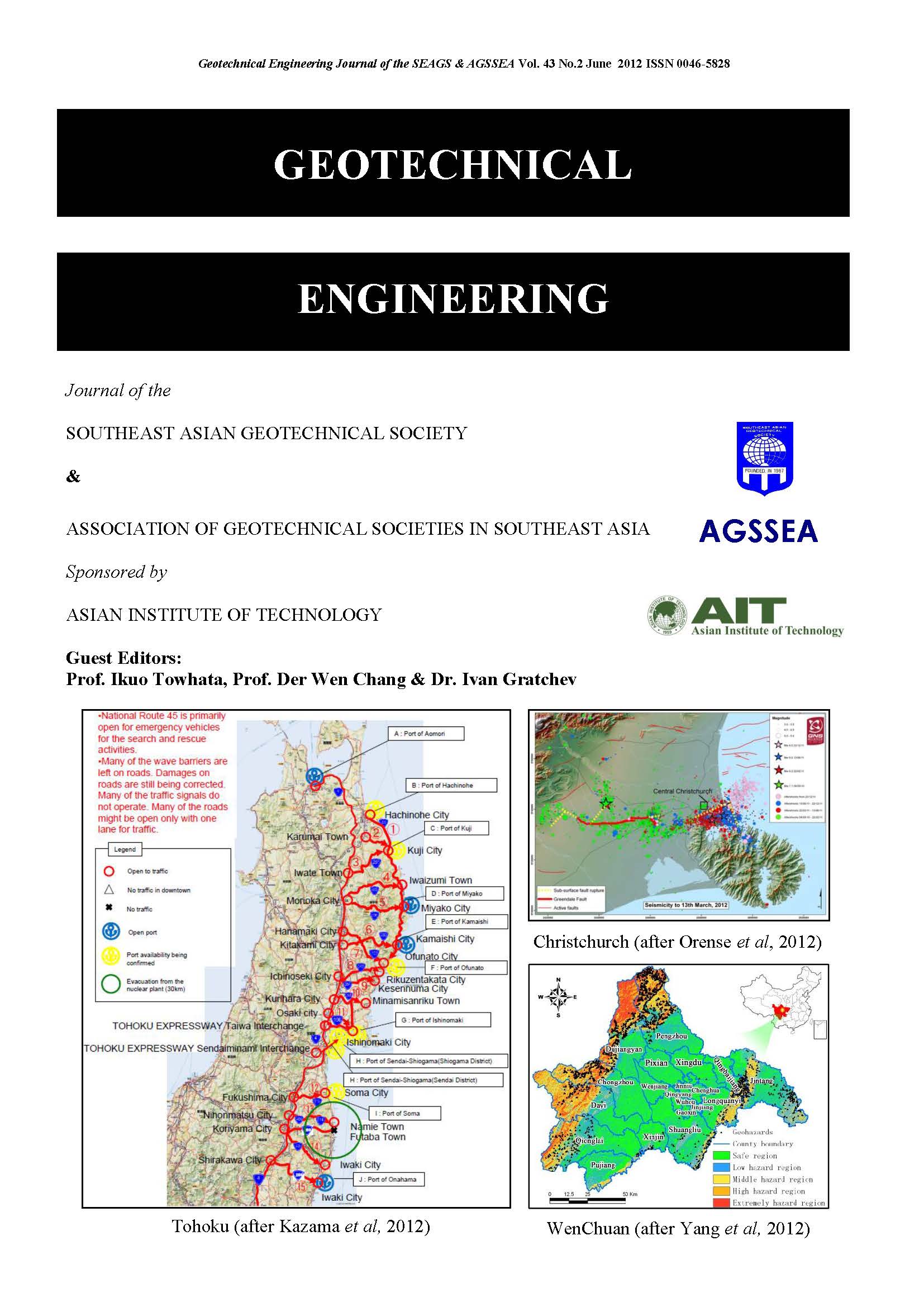Monitoring on Earthquake Induced Landslide – A Case Study in Northwest Chengdu, China
Main Article Content
Abstract
Many after-shock slopes covered by loose deposits, when heavy rain comes, the slope easily slides and turns into debris flow. Thus, the slope movement and the moisture of slope are most important factors for landslide and debris flow. For these style landslides, real-time monitoring is a good way for local people. After analysed the system requirements, the authors proposed an easy-to-use and low power consumption monitoring system. This system consists of two parts, field part and data processing part. The field part includes a few sensors and a data transferring unit. The sensors are made up of tilt sensor, soil moisture meter and rain gauge. A demo system was setup on a sliding slope in Taziping, northwest of Chengdu city. After a field test with artificial rainfall, a criterion for warning was drawn. The demo system has proved it’s effective. It is an economy and simple solution for similar area.
Article Details

This work is licensed under a Creative Commons Attribution-NonCommercial-NoDerivatives 4.0 International License.
Copyright © 2019 Association of Geotechnical Societies in Southeast Asia (AGSSEA) - Southeast Asian Geotechnical Society (SEAGS).


